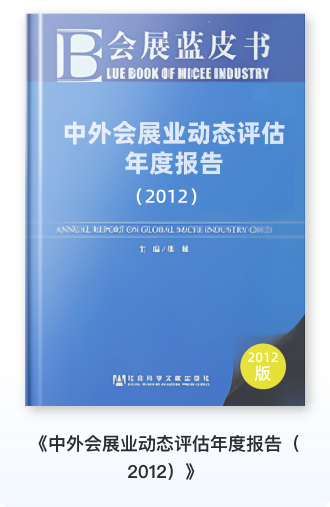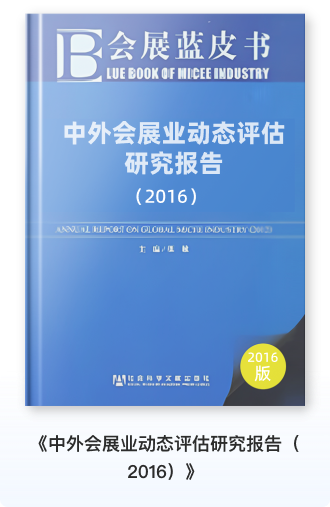
Blue Book of MICEE Industry
This book focuses on the current situation, dynamics and trends of the domestic and international MICEE industry. Based on the three factors of production for the MICEE industry - infrastructure, exhibition projects and exhibition organizers- it establishes a comprehensive evaluation model for the development of the MICEE industry using the self-created SMI Index. On this basis, it conducts comprehensive research on the dynamic evaluation of the domestic and international MICEE industry, mainly discussing global exhibition power, world exhibition city strength, domestic and foreign exhibition venues, top 100 domestic and foreign trade shows, multinational exhibition organizers, international evaluation of the MICEE industry, etc. The innovations lie in the use of ratio methods for index calculation to observe the longitudinal changes and development trends of the domestic and international MICEE industry, while also adding research content such as the assessment of provincial MICEE competitiveness and Belt and Road exhibition activities. As always, the research report adheres to professional perspectives, academic logic, empirical foundations and quantitative grasp. It focuses on the ecological environment, development process, major phenomena, hot issues, lessons and theoretical summaries of the domestic and international MICEE industry. It pursues a solid and reliable data foundation and attaches importance to the collection, collation, refining and summarization of statistical data and typical cases. The data and cases involved in the report come from publicly released professional materials, mainly from: official announcements from domestic and foreign public institutions and MICEE industry associations and professional organizations; research results from exhibition research institutions such as UFI, AUMA, FKM, ICCA; officially published data from exhibition agencies, venue enterprises, festival and event organizations; in-depth reports from authoritative media, etc.


The research found that in recent years, although the global economy has generally lacked growth and international trade has remained sluggish, the global MICEE industry has maintained a steady upward development trend. Competition within the industry, resource integration, "Internet +" and new business expansion have become the focus of attention. The report believes that the competition and cooperation among global exhibition countries are intensifying. With the continuous improvement of emerging exhibition countries in the Asia-Pacific region, the absolute advantage of traditional European exhibition powers represented by Germany is becoming a relative advantage. The adjustment of the global MICEE industry pattern brings opportunities for emerging exhibition countries to build an open economy and modern market system, while also posing new severe challenges. Relying on the advantages of two single indices - exhibition venue facilities and exhibition projects, China continues to rank second in the world exhibition country index, indicating that China's MICEE industry has not improved its comparative advantage in the global MICEE market pattern. Shanghai is rising strongly among world exhibition cities. Asian exhibition cities are making steady progress, with some cities' rankings rising. European exhibition cities maintain their traditional advantages, and German exhibition cities still demonstrate great strength.
Another perspective of the research report is to evaluate the development of China's domestic MICEE industry from a provincial perspective based on the development of China's own MICEE industry. The research found that the top 10 provinces in terms of comprehensive exhibition strength are Guangdong, Shandong, Shanghai, Beijing, Jiangsu, Zhejiang, Sichuan, Liaoning, Chongqing and Fujian. The data shows that the overall strength of domestic provincial MICEE industries can be divided into five echelons. The indicators of the first and third echelons are relatively balanced with stronger competitiveness. The fourth echelon has larger fluctuations in individual data and needs to strengthen balanced development. The fifth echelon is mostly western provinces, with relatively weak individual indicators and overall competitiveness.
The third perspective is research on the strength of Chinese exhibition cities. At present, most Chinese exhibition cities are in the process of increasing strength year by year. Shanghai, Guangzhou, Beijing and Chongqing form China's first-tier exhibition growth poles. Faced with cooperation and competition between cities, many potential cities will achieve breakthroughs in the future relying on exhibition venue construction, policy promotion and other factors.
In addition, the report specifically analyzes and compares the global venue strength, Chinese venue exhibition capacity, global exhibition company strength, growth of Chinese exhibition companies, top 100 global trade shows, status quo of Chinese trade shows, and pays special attention to the exhibition industry dynamics in countries along the Belt and Road, as well as the development trends of exhibitions like China-ASEAN Exposition (CAEXPO) and China-Arab Expo.